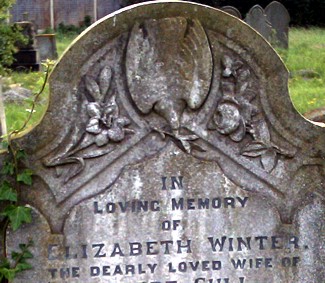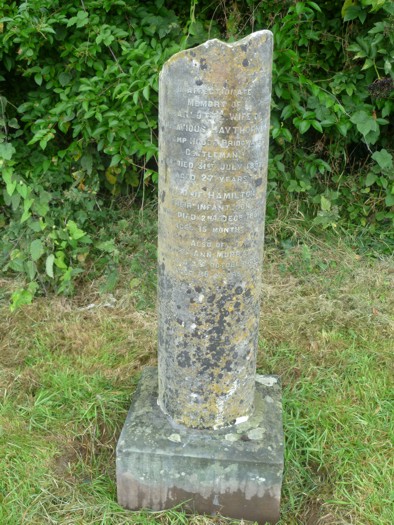Memorials to the dead, in whatever form they have taken, have contained symbols of many kinds over thousands of years. Many are complex; some are still being interpreted and others have been created (and are still being created) by relatives as their particular and personal way of commemorating the memory of their loved ones.
During the nineteenth century the use of floral symbols became very popular. So much so that the Victorians became particularly fond of this style of symbol and almost every common flower had a symbolic meaning attached to it. Other forms of adornment were also adopted. We hope you will find the following interesting, particularly if you have been wondering what a symbol on a memorial to one of your loved ones meant.
We are grateful to Metro Publishers for kindly giving their permission to use the text which is an extract from their publication "London's Cemeteries" (ISBN 978-1-902910-40-6). Their website is www.metropublications.com. Examples from the Wembdon Road have been inserted by the Friends.
Objects
Anchor - This can indicate the sea-faring occupation of the deceased or more generally represent hope and steadfastness.
Angels - They are an obvious religious symbol. Individual angels can be Identified by the objects they carry. Michael bears a sword; Gabriel carries a horn. An angel blowing a trumpet represents the day of judgment. Angels are frequently depicted escorting the deceased to heaven.
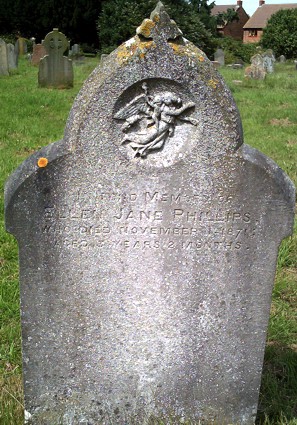
Arch or gate - The victory of life or victory in death.
Arrow - This represents the arrow of time or mortality
Broken column - Usually represents a life cut short or the loss of the head of the Family. It also symbolises decay and the inevitability of death.
Broken or severed flower - This is a sign of early or sudden death. A severed bud denotes the death of a child.
Candle with a flame - This symbolises life.
Celtic cross - The main circle around the crosspiece represents eternity. It originates from the British Celtic cultures.

This larger cross, memorial 828 for the Parminter family, carries the IHS (see below). Sometimes these impressive crosses were chosen by families for their pleasing forms, although it can sometimes refer to a family's Celtic origins, be they Scottish, Welsh, Cornish or Irish.
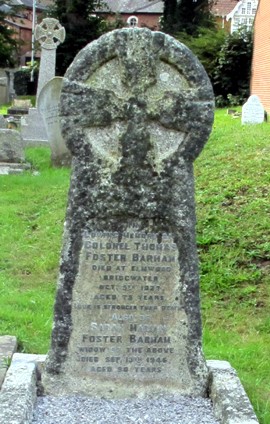
Cherub's Head - A symbol for the soul
Circle - Eternity and life everlasting.
Doors and gates - Represent the gates of Heaven and the passage into the afterlife.
Drapery - This indicates sorrow and mourning.
Hands clasped - Representative of marriage or a close bond which lasts even after death. The first to die holds the other's hand, guiding the spouse to heaven. Clasped hands also mean a farewell or a last good-bye.
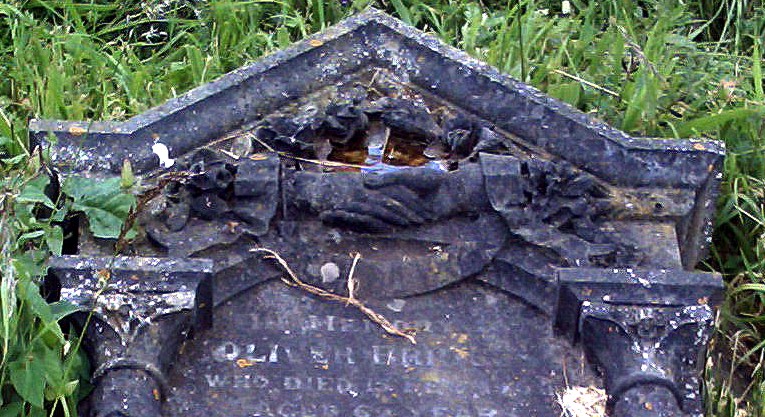
MU means mutual union. The hands clasped at the top of the memorial are a symbol of the final farewell between loved ones, but also how they are always united, reinforced by 'in death not divided'.
Hand pointing upward A symbol of life after death and ascension to heaven for the righteous.
Hand pointing downward Represents mortality or sudden death.
Heart - Love, encouragement and intelligence
Hourglass - Representing the passage of time and transcience of life. On its side means that time has stopped for the deceased.
IHS - An abbreviation of the word for Jesus in Greek, known as the 'sacred monogram.'

Lamp - Representing the light of knowledge and truth.
Moon - Rebirth.
Mourning figure - An early 20th century funerary image
Obelisk - The obelisk was the Egyptian symbol for the sun god Ra who held the power to recreate. It represents eternal life and health.
Pyramid - It was thought a pyramid-shaped tombstone prevented the devil from reclining on a grave. The pyramid also symbolises eternity.
Rocks - Representing St. Peter and the rock of faith.
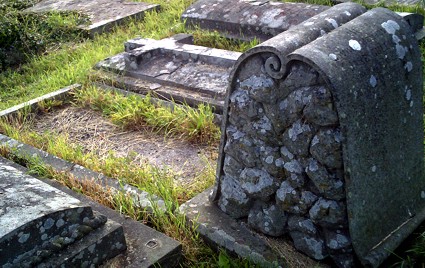
This large memorial for the Best family, number 310, is in the form of a clump of rocks with a scroll. The scroll was a popular symbol, along with a book, representing the holy scriptures and the book of life.
Set square and compasses - This is a Masonic symbol but was also used to denote an architect.
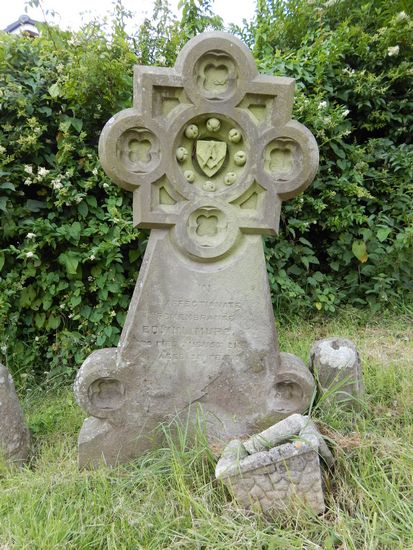
Sextant - Used to indicate a navigator or explorer.
Torch - A Greek symbol of mourning and the body as a vessel of the soul. Draped, it represents death often of an older person.
Woman clinging to cross, pillar or anchor. This represents faith as does a woman with or without a Bible pointing upward.
Flora
Daisy - Innocence
Fleur-de-Lis - Flame, passion, ardour and mother
Forget-me-Not - Remembrance
Hawthorn - Hope, merriness and springtime
Holly - Foresight
Honeysuckle - Bonds of love, generosity and devoted attention
Ivy - Friendship, fidelity, faithfulness, evergreen memories
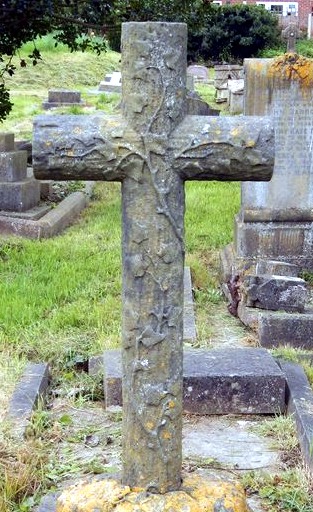
Laurel branch, laves - Represents special achievement, distinction, heroism and the triumph of worldly accomplishment.
Lily - Representing the Virgin Mary, purity and resurrection. Often used on women's graves to represent the restored innocence of the soul in death.
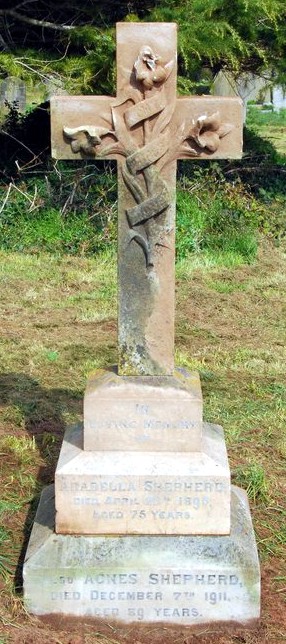
Lily of the Valley - Purity and humility
Oak tree - Representing stability, strength, honour, eternity and endurance. Oak as thought to be the tree from which Jesus Christ's cross was made.
Palm - The triumph of life over death through resurrection.
Pansy - Remembrance and humility.
Passion Flower - The passion of Christ. The corona represents the crown of thorns, the three stigmas stand for for the three nails, the five anthers the five wounds and the five petals and the five sepals symbolise the ten Apostles.
Poppy - Eternal sleep, rest
Rose - Representing love, beauty, hope and goodness and associated with the Virgin Mary and the 'rose without thorns.' A red rose stands for martyrdom and a white rose means purity.
Thistle - Christ's crown of thorns and earthly sorrow.
Tree - The tree of life. A severed branch represents mortality and a sprouting branch means life everlasting.
Willow tree - A symbol of sorrow and mourning.
Wheat gathered - Representing the divine harvest and often used for someone dying in later life.
Wreath or Garland - Meaning victory in death.
Yew tree - Evergreen, life after death
Other Symbols
